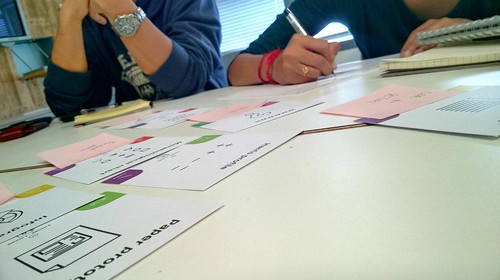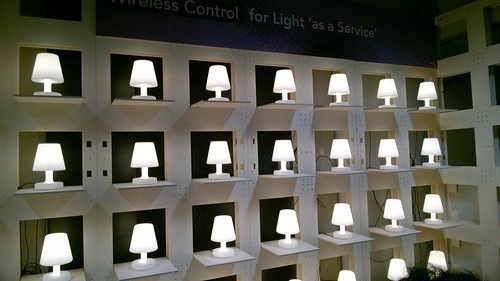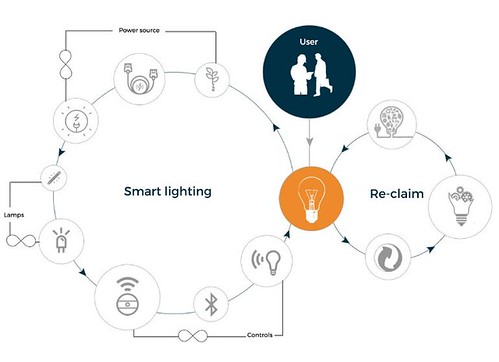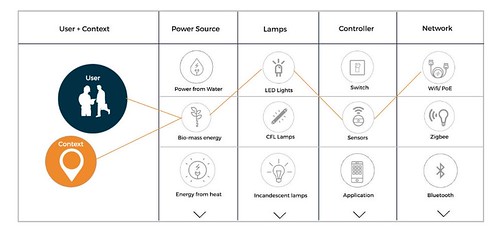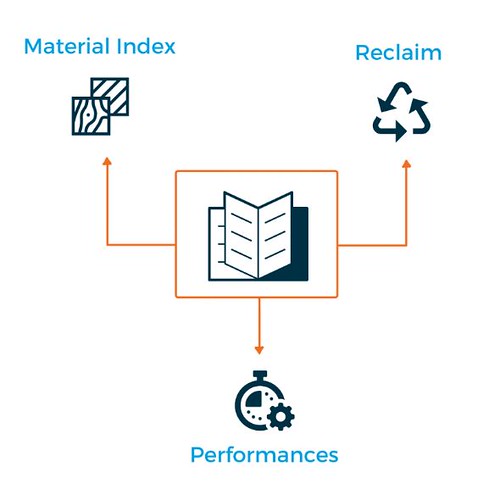After our white-knuckle ride, which was the case of our second sprint, we came to the conclusion we should not focus only on an application. If anything, the application could be a part of a bigger system. However we word it, it all leads to the same point: we must broaden our thoughts and stop thinking in small scaled-solutions.
Picture was taken during our Sprint planning meeting, where we had a brainstorm session
After a fierce brainstorm session, it was apparent that if our stakeholders are expecting something life-changing and innovative. We must deliver a tool which will always remain dynamic. Something infinite.
We came up with the idea to adopt the Cradle-to-Cradle theory, which we consider to aid us in this project. Assuming we can create something that is applicable everywhere and always relevant, it could be the fitting solution which we can provide. Easier said than done, as designing this model was a real brainteaser.
Cradle-to-Cradle is basically an idea where every material retains it’s value. So after it’s usage, it will be recycled and ready to be used again
Our sprint goal this time was:
Design a framework based on the lighting system inspired from the “cradle to cradle” theory to suit the KLM premises on a holistic level and demonstrate a prototype fitting the context of Data Centre.
At the end of the first week, we decided to have another brainstorm session/ workshop, combining the ideas we all had through our research. This workshop gave us a few interesting revelations:
- We decided we’ll go ‘out of the box’ for the recycling part;
- We took a standpoint as to the best solution could be like a closed loop ( or semi closed system), where the lights are also recycled to be implemented again;
- The needed technological innovation with regard to the loop already has grown so wide, so we came to the conclusion to take advantage of that and focus our minds on the C2C-part.
First concept of our Cradle-to-Cradle design
Still we had our doubts concerning certain parts. However, after visiting Chess Wise and seeing some of their possibilities, it gave us an opportunity to look into the practical functionality of the technology loop, that we slowly started to see the different puzzle pieces fit together. And this was only enforced when we had our Translate session. During the meeting, together with our coaches we came up with the idea to create a framework with all the current possibilities. And this was the push we needed to get into our flow. We also made the very important decision of changing the recycle part into the reclaim part.
Picture was taken during our meeting with Chess Wise
The rest of the time was used to think of the possibilities and components of this framework and connecting this to the idea of a passport. We decided that this passport would be our altered design model of the Cradle to cradle system. We made a tabular scheme incorporating the different components needed in the system. This framework was eventually converted to an interactive circular diagram. From this framework the user can choose his own parameters and come up with a system. The passport plays an important role, it basically lists all the materials, present in the building and the possibilities as of how to reclaim them. But it also contains the performances of the building, like energy usages, heat management etc.
The process of our design
The tabular presentation of the possibilities
Diagram of the passport
This is the conceptual idea we eventually presented to the stakeholders on the 10th of November. They seem to understand the pivot we made to focus on a system instead of a technical part of the system.
For the next sprint, we would like to perform an intense user research, look into ways of making a feasible system and elaborate on the practical application of it. If possible, we would also like to view other premises of KLM, so we can adapt this system to be used on a wide variety of buildings in the premises. But we are sure that we would not lose our aim and make the system work for the Data Center. This means we must make hard decisions, as well as give our stakeholders the choice to make decisions- flexibility is the key we are going to focus on.
So, you could say this was until now the most braincracking sprint. We discussed a lot more. But the result is definitely something we can build upon. If this works, then we will definitely be smart and sustainable for the future as we intended to achieve through the course of the project! Fingers crossed.








